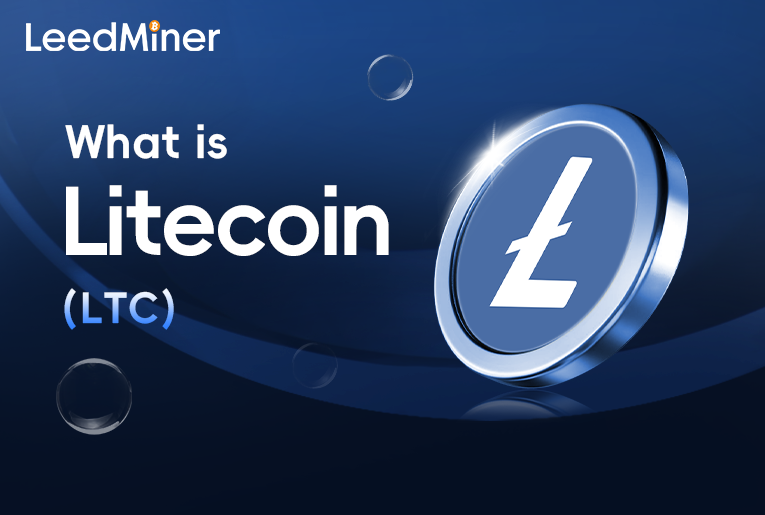SUMMARY
Litecoin (LTC) is a decentralized cryptocurrency launched in 2011 by Charlie Lee as a faster, more cost-effective alternative to Bitcoin. Often called the “silver to Bitcoin’s gold,” Litecoin retains Bitcoin’s core features but enhances transaction speed and accessibility. Using the Scrypt algorithm, Litecoin allows for more inclusive mining and quicker transaction confirmation, making it suitable for everyday payments. Known for adopting technologies like SegWit and the Lightning Network, Litecoin is widely accepted on major exchanges and valued for its efficiency in digital payments.
Introduction to Litecoin
Litecoin (LTC) is a decentralized peer-to-peer cryptocurrency, often referred to as the “lightweight version of Bitcoin.” It also uses blockchain technology to ensure transparency and immutability of transactions. LTC was created in 2011 by Charlie Lee, a former Google engineer, with the primary goal of solving Bitcoin’s scalability and speed issues. LTC was designed to facilitate faster and more efficient digital transactions. LTC aimed to become the “silver” to Bitcoin’s “gold.” This positioning underscores its focus on being a more practical, everyday-use cryptocurrency, particularly for small transactions and payments.
Technical Features of LTC
Transaction Speed
LTC generates a new block every 2.5 minutes, four times faster than Bitcoin’s 10-minute block time. This allows for quicker transaction confirmations, making it suitable for real-time payments.
Supply Limit
The maximum supply of LTC is 84 million coins, four times the supply of Bitcoin’s 21 million. This larger supply helps manage inflation pressure and increases accessibility for a broader user base.
Scrypt Algorithm
LTC uses the Scrypt algorithm, unlike Bitcoin’s SHA-256 algorithm. Scrypt is more memory-intensive, making mining more democratic and less reliant on specialized hardware. This lowers the likelihood of large mining operations monopolizing the network.
Segregated Witness (SegWit) and Lightning Network
LTC was an early adopter of both SegWit and the Lightning Network. These technologies enhance the blockchain’s transaction processing speed and efficiency, further reducing transaction costs.
Advantages and Disadvantages of LTC
Advantages
- Fast, Low-Cost Transactions
With a shorter block generation time and Scrypt algorithm, LTC is faster and cheaper than Bitcoin, making it ideal for small transactions.
- High Decentralization and Security
Similar to Bitcoin, LTC uses a Proof-of-Work (PoW) consensus mechanism, offering strong security and resistance to attacks.
- Pioneer in Technology
As an early adopter of SegWit and the Lightning Network, LTC enjoys strong community and developer support, giving it an edge in the crypto space.
Disadvantages
- Lower Market Awareness
While LTC is technically mature, it is not as well-known as Bitcoin or Ethereum among investors and users.
- Limited Use Cases
Unlike Ethereum, which supports complex smart contracts, LTC’s primary use case is payments, making its ecosystem less diverse.
- Volatile Price and Market Risk
The value of LTC can fluctuate significantly, affected by market sentiment and regulatory changes, posing risks for investors.
Development History of LTC
Early Stage
LTC was launched in 2011 and quickly gained traction due to its similarity to Bitcoin and its faster transaction processing, attracting early adopters.
Technological Advancements
In 2017, LTC was among the first to implement Segregated Witness (SegWit), which improved transaction speed and network efficiency. Subsequently, LTC also adopted the Lightning Network, enhancing both on-chain and off-chain scalability.
Market Position
Although LTC’s market capitalization has fluctuated over recent years, it remains a widely recognized cryptocurrency, supported by major exchanges. Its stability and technological innovations have fostered a loyal user base.
Future Prospects of LTC
Technological Upgrades
The LTC community and development team continue to explore ways to improve technology, such as enhancing privacy features and scalability. As blockchain technology evolves, LTC may incorporate innovations that boost transaction speed and privacy.
Market Outlook
With the cryptocurrency market maturing, LTC may continue to leverage its payment advantages. Though competition from other cryptocurrencies is increasing, LTC’s high technical maturity and stability may help it maintain its market position.
Potential for Broader Application
In the future, LTC’s utility for payments, transfers, and small transactions may increase, especially as cryptocurrencies gain acceptance as a payment method. LTC may also find new use cases within the broader blockchain ecosystem. Litecoin has established itself as a practical, efficient cryptocurrency with a clear focus on fast, low-cost transactions. While not as versatile as some blockchain platforms, its specialization in payments gives it a valuable niche. As the digital economy grows, Litecoin’s technical reliability and supportive community position it well for continued use in global transactions.



